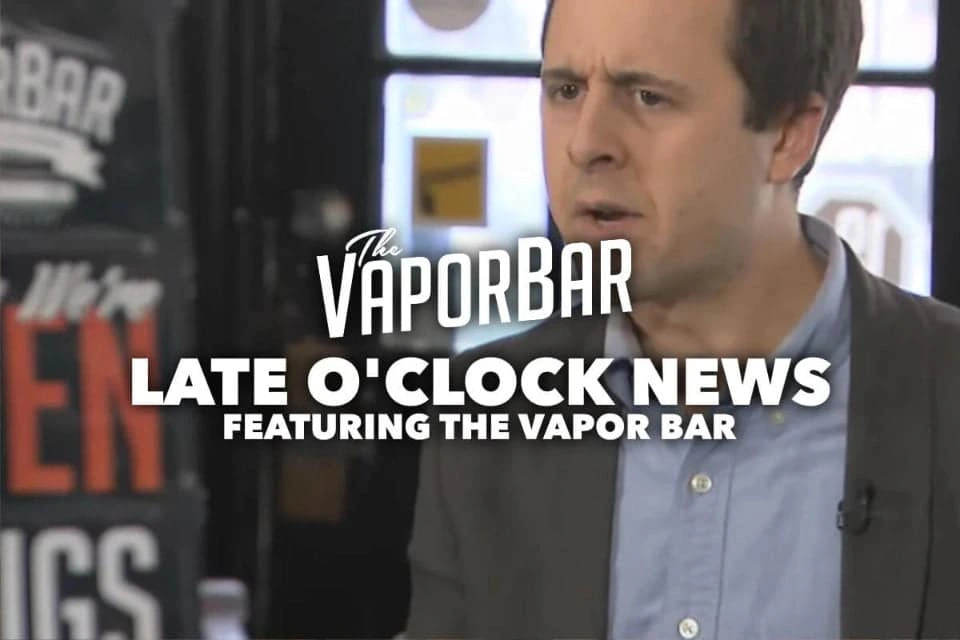
The Vapor Bar on Late O’ Clock News
Back when bill 45 was proposed we had a visit from MTV’s Paul the Intern and his new show “Late O’ Clock News”. It made for a good time.
Matt Ramage – The Vapor Bar
WARNING
Vaping products contain nicotine, a highly addictive chemical.
Health Canada

Back when bill 45 was proposed we had a visit from MTV’s Paul the Intern and his new show “Late O’ Clock News”. It made for a good time.
Matt Ramage – The Vapor Bar
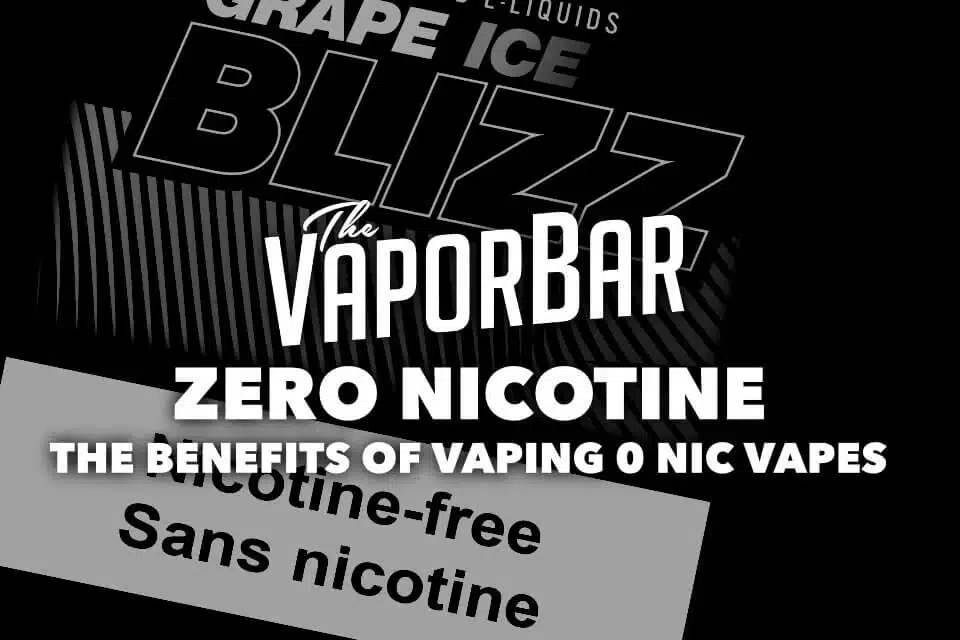
In recent years, vaping has become a popular alternative to smoking, offering a less harmful option for those looking to quit cigarettes. One trend that has gained significant traction is the use of nicotine-free vapes. These vapes provide all the enjoyment of vaping without the addictive substance, making them an ideal choice for those who want the experience without the dependence.
For Canadians, the rise of nicotine-free vapes offers a new way to enjoy vaping, whether you’re looking for a vape sans nicotine or seeking the best zero nicotine disposable vapes in Canada.
Nicotine is the primary addictive substance found in traditional cigarettes and most vapes. It’s what keeps smokers and vapers coming back, often making it difficult to quit. However, with nicotine-free vapes, you can enjoy the sensation of vaping without the addictive side effects of nicotine.
This makes no nicotine vapes an excellent choice for those looking to reduce or eliminate their dependence on nicotine. By opting for a nic-free vape, you can break the cycle of addiction while still enjoying the ritual of vaping.
Vaping is widely considered to be a safer alternative to smoking cigarettes, primarily because it doesn’t involve combustion, which produces harmful tar and carcinogens. When you eliminate nicotine from the equation, the safety factor increases even more. Non-nicotine vapes remove the risk of nicotine-related health issues such as elevated heart rate, increased blood pressure, and the potential for addiction. For those in Canada, choosing a 0 nicotine vape is a way to enjoy the benefits of vaping without compromising your health.
One of the major attractions of vaping is the experience itself—the flavors, the vapor, and the sensation of inhaling. With a vape without nicotine, you can still enjoy all these aspects without the addictive component.
Whether you’re using a nicotine-free disposable vape or a refillable device, the experience remains largely the same. This is particularly appealing to those who enjoy vaping for the sensory aspects rather than the nicotine hit. In Canada, zero nicotine vapes are available in a wide range of flavors and devices, allowing you to tailor your experience to your preferences.
The variety of flavors available for 0 nicotine vapes is extensive, from fruity to dessert-inspired options. Many users report that without the harshness of nicotine, flavors taste even better, making the experience more enjoyable. Whether you’re in Canada or elsewhere, nicotine-free vapes allow you to savor your favorite flavors without any bitterness. This makes nicotine-free vape juice a popular choice for those who prioritize flavor in their vaping experience.
For many, quitting nicotine is a gradual process. Transitioning to a no nicotine vape can be an effective step in this journey. By gradually reducing your nicotine intake and eventually moving to 0 nic vapes, you can wean yourself off nicotine without giving up the act of vaping.
This approach can make quitting nicotine more manageable, as it allows you to maintain the habit while eliminating the addictive substance. For Canadians, zero nicotine vapes are readily available, making it easy to find products that support your goal of quitting nicotine.
Whether you’re a beginner or an experienced vaper, there’s a zero nicotine vape that’s perfect for you. From simple, user-friendly nicotine-free disposable vapes to more advanced refillable systems, there’s a nic-free vape for every level of experience. Beginners may prefer the simplicity of a 0 nic disposable vape, while more seasoned vapers might opt for a refillable device with more customization options. No matter your preference, vape sans nicotine options are widely available across Canada.
Switching to a nicotine-free vape offers numerous health and lifestyle benefits. Without nicotine, you’re less likely to experience the irritability, anxiety, and cravings associated with nicotine withdrawal. Additionally, 0 nicotine vapes can help reduce your risk of developing nicotine-related health issues over time. This makes nicotine-free vapes a smart choice for those who want to improve their overall well-being while still enjoying the pleasure of vaping.
Finding nicotine-free vapes in Canada is easier than ever, with a wide range of options available both online and in physical stores. Whether you’re searching for a vape without nicotine near me or looking to shop online, Canadian vape shops like The Vapor Bar offer an extensive selection of nicotine-free vape juice, 0 nic disposable vapes, and more. With so many options available, it’s simple to find the perfect nic-free vape to suit your needs.
Choosing a nicotine-free vape offers a multitude of benefits, from breaking free of nicotine addiction to enjoying a safer, more customizable vaping experience. With a wide range of flavors and devices available, 0 nicotine vapes provide all the enjoyment of vaping without the downsides of nicotine. Whether you’re in Canada or elsewhere, zero nicotine vapes are an excellent choice for those who want to enjoy vaping on their own terms.
For more information on where to buy nicotine-free vapes in Canada, visit The Vapor Bar and explore our online options for the best deals on nic-free vapes today.
Shop zero nicotine e-liquids here
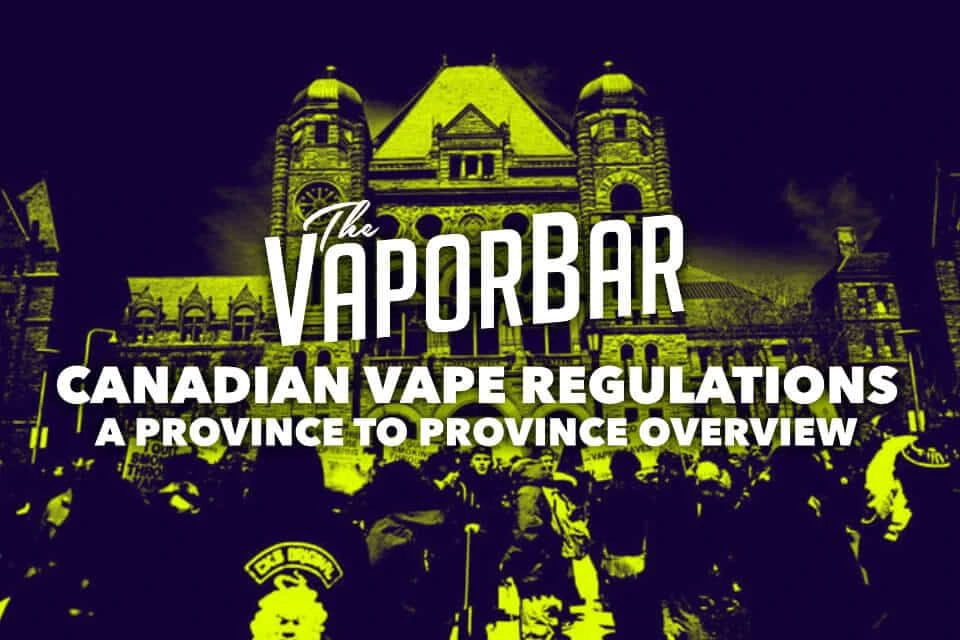
Vaping, e-cigarettes, and related products like disposable vapes, vape juice, and e-liquid have become a popular alternative to traditional smoking in Canada. However, the regulations surrounding these products vary across provinces, making it essential for vapers to stay informed about the rules where they live. In this blog post, we’ll explore Canadian vape regulations from province to province, targeting key topics such as vape product availability, sales, age restrictions, and advertising laws.
Before diving into provincial differences, it’s important to note that Canada has a set of federal regulations that apply to vaping. The Tobacco and Vaping Products Act (TVPA), introduced in 2018, regulates the manufacturing, sale, labeling, and promotion of vaping products across the country. Some of the key provisions of the TVPA include:
While these regulations serve as the baseline, individual provinces often add their own rules to address the unique needs of their residents.
British Columbia has some of the strictest vaping regulations in Canada. The province raised the minimum age for purchasing vape products, including disposable vapes and e-liquid, to 19 years. BC also introduced a 20% sales tax on all vaping products in 2020, one of the highest in the country.
In addition, BC limits nicotine concentrations to a maximum of 20 mg/mL, in line with federal rules. The sale of flavored vape juice is restricted to adult-only stores, preventing minors from being exposed to products that might appeal to them.
Key Points:
Ontario follows federal guidelines closely but imposes additional restrictions on the sale and advertising of vaping products. For example, advertising and display of vape products is only allowed in specialty stores, where customers must be over 19 years old.
Flavored e-liquid sales are allowed, but again, these are restricted to specialty stores. Pod mods and disposable vapes are available throughout the province, but retailers must adhere to strict guidelines regarding their sale and promotion.
Key Points:
Quebec has adopted a notably conservative approach to vaping. The province has restricted advertising and the public display of vape products even more than the federal government. Retailers are not allowed to show products in their stores, and advertising is strictly limited to point-of-sale information.
The sale of flavored vape juice is banned entirely unless it is tobacco-flavored, which significantly impacts the availability of popular pre-filled vape pods and other products. Additionally, Quebec raised the minimum age to purchase vaping products to 21 in 2020, the highest in Canada.
Key Points:
Alberta is one of the few provinces that does not have its own provincial vaping laws, instead relying on federal regulations under the TVPA. This means that flavored vape juice and high-nicotine disposable vapes are widely available in the province.
However, Alberta recently introduced legislation to set the minimum age for purchasing vaping products at 18 years, aligning with the federal guidelines. The province is also considering further restrictions on advertising and youth access.
Key Points:
Nova Scotia has taken an aggressive stance on vaping regulations. In 2020, the province banned the sale of flavored vape juice, with the only exception being tobacco-flavored e-liquids. This makes it one of the strictest provinces in terms of flavor bans.
Nova Scotia also imposes a 20 mg/mL nicotine limit and applies a 20% sales tax on all vape products. The province has a minimum purchase age of 19 years, in line with other provinces.
Key Points:
Other provinces like Manitoba, Saskatchewan, Newfoundland and Labrador, and Prince Edward Island also have their own sets of rules, often reflecting variations in age restrictions, taxation, and flavor bans. Most of these provinces set the minimum age for vape product purchases at 19 years, though Prince Edward Island follows Quebec’s lead with a minimum age of 21 years.
Across the board, Canada’s provinces are tightening rules on the sale and advertising of vape kits, pod mods, and pre-filled vape pods to prevent youth from picking up the habit.
Navigating Canada’s vaping regulations can be tricky due to the variations between provinces. Whether you’re in BC, Ontario, Quebec, or elsewhere, it’s essential to stay updated on your province’s specific rules regarding disposable vapes, vape juice, and other products. With vaping becoming an increasingly popular alternative to smoking, understanding these regulations will help both retailers and consumers make informed decisions.
If you’re looking for the best vaping products and want to ensure you comply with local laws, check out our wide range of options, from disposable vapes to e-liquids and vape kits that suit your needs.
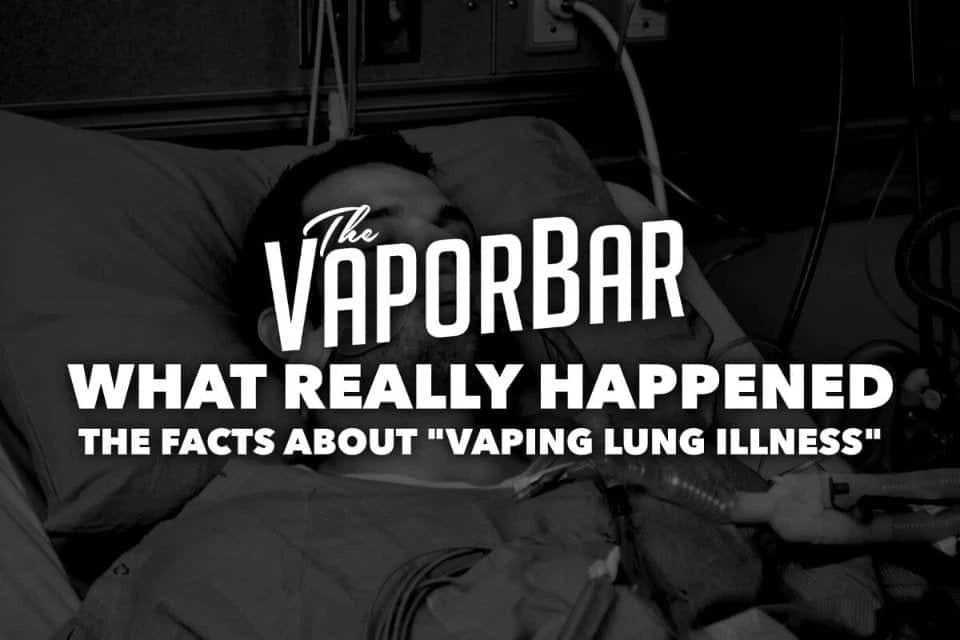
In 2019, a sudden outbreak of lung illnesses linked to vaping, commonly referred to as EVALI (E-cigarette or Vaping Use-Associated Lung Injury), sparked widespread concern and confusion. Many people initially believed that nicotine-based e-cigarettes were the primary cause. However, further investigation revealed that the real culprit was not the legally regulated nicotine products but rather illicit, black-market cannabis vapes.
As the outbreak unfolded, the Centers for Disease Control and Prevention (CDC) and other health agencies began to pinpoint the true cause of the lung illnesses. The majority of the cases were linked to vaping products containing THC, the psychoactive component of cannabis, particularly those obtained from unregulated and illegal sources.
A key factor in these cases was the presence of Vitamin E acetate, a substance often used as a cutting agent in illicit THC cartridges. Vitamin E acetate is harmful when inhaled and was found in the lung fluid of many patients who developed EVALI. It was this substance, not nicotine or nicotine-based e-cigarettes, that was responsible for the outbreak (Wikipedia, Detroit Metro Times).
The media coverage at the time often blurred the lines between nicotine vapes and THC vapes, leading to public confusion. According to a poll, 58% of Americans incorrectly believed that nicotine vapes were to blame for the lung illnesses, while only 34% identified cannabis products as the cause (Detroit Metro Times). This misunderstanding fueled public fear and led to policy responses that targeted nicotine vapes, even though they were not the primary cause of the outbreak.
The misinformation surrounding the outbreak had significant consequences. For instance, many ex-smokers who had successfully quit smoking by switching to vaping were scared back into smoking cigarettes. Additionally, bans on flavored e-liquids in response to the crisis inadvertently created a new black market for these products, compounding the problem (Detroit Metro Times).
It’s crucial to focus on the facts when discussing vaping and public health. The 2019 lung illness outbreak was not caused by regulated nicotine vaping products but by dangerous, illicit THC products that contained harmful additives like Vitamin E acetate. As the conversation about vaping continues, it’s essential to separate fact from fiction to ensure that public health policies are based on accurate information and that smokers have access to safer alternatives like regulated nicotine vapes.
For more detailed information, you can check the full analysis on the [CDC’s report](https://archive.cdc.gov/#/details?url=https://www.cdc.gov/tobacco/basic_information/e-cigarettes/severe-lung-disease.html).
Matt Ramage – The Vapor Bar
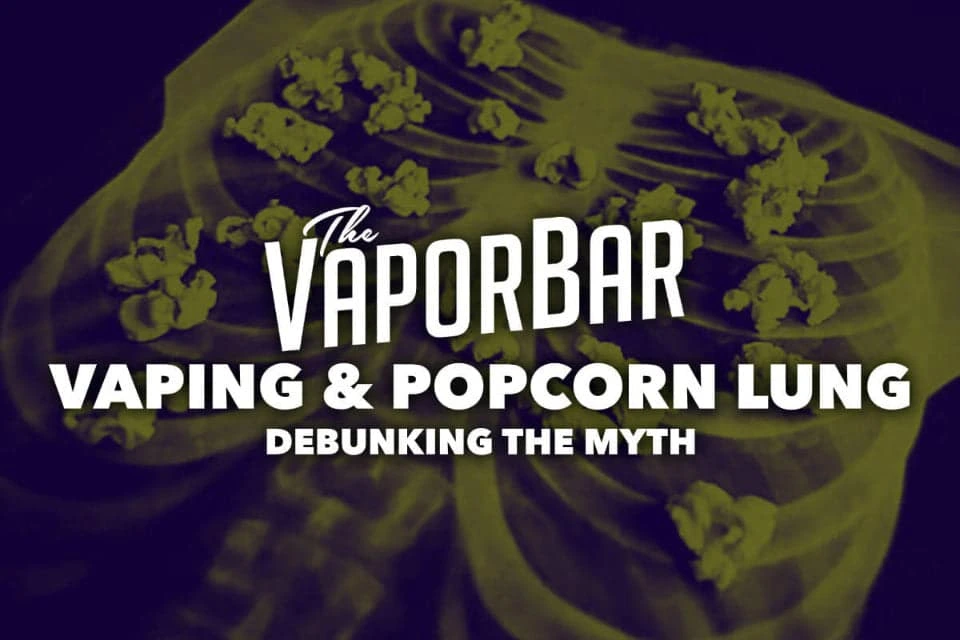
Vaping has been at the center of numerous debates, with one of the most persistent myths being its association with “popcorn lung,” a condition formally known as bronchiolitis obliterans. This blog will explore the origins of this myth, compare the risks of vaping to smoking, address misconceptions, and provide data-backed insights to clarify the real risks involved.
Popcorn lung is a rare, irreversible condition that damages the smallest airways in the lungs, leading to coughing, shortness of breath, and difficulty breathing. The term “popcorn lung” originated in the early 2000s when workers in a microwave popcorn factory were diagnosed with bronchiolitis obliterans after being exposed to high levels of diacetyl, a chemical used to give popcorn its buttery flavor.
The concern about vaping and popcorn lung stems from the fact that diacetyl was once found in some e-liquids. However, it’s important to note that the levels of diacetyl in those e-liquids were significantly lower than what was found in cigarettes.
| Product | Diacetyl Level (µg/m³) |
| Cigarettes (1 pack) | 335.9 |
| E-liquids (pre-2016) | 9.0 |
| E-liquids (post-2016) | 0.0 |
*Source: Cancer Research UK, American Vaping Association
In 2016, most reputable e-liquid manufacturers removed diacetyl from their products entirely, reducing the risk to virtually zero. On the other hand, cigarettes still contain diacetyl in much higher concentrations, yet smoking has not been widely associated with popcorn lung in public discourse.
While both vaping and smoking involve inhaling substances into the lungs, the risks associated with each are dramatically different.
Risk of developing lung disease among smokers compared to vapers (Data from the National Academies of Sciences, Engineering, and Medicine)
One of the most pervasive misconceptions is that vaping is just as dangerous as smoking. This belief is largely fueled by misinformation and sensationalist media coverage.
Data from the Public Health England survey
Vaping as a Smoking Cessation Tool: Public Health England and the American Heart Association have both acknowledged that vaping can be an effective tool for smoking cessation. Despite this, only a small percentage of smokers are aware of the potential benefits of switching to vaping.
Youth Vaping Concerns: There is significant concern about youth vaping, but it’s crucial to separate the issues of adult smoking cessation and youth access to nicotine. Regulatory measures, such as age restrictions and marketing controls, are essential to address youth vaping without undermining the potential harm reduction benefits for adult smokers.
The myth of popcorn lung has been a powerful tool in anti-vaping rhetoric, but the science does not support the idea that vaping is as harmful as smoking, or that it poses a significant risk of causing popcorn lung. The removal of diacetyl from e-liquids, combined with the significantly lower risks associated with vaping, underscores that for smokers looking to quit, vaping remains a safer alternative.
1. Cancer Research UK. (2020). Diacetyl in E-Liquids vs. Cigarettes.
2. National Academies of Sciences, Engineering, and Medicine. (2018). Public Health Consequences of E-Cigarettes.
3. Royal College of Physicians. (2016). Nicotine without smoke: Tobacco harm reduction.
4. Public Health England. (2019). Vaping in England: An evidence update.
Matt Ramage – The Vapor Bar
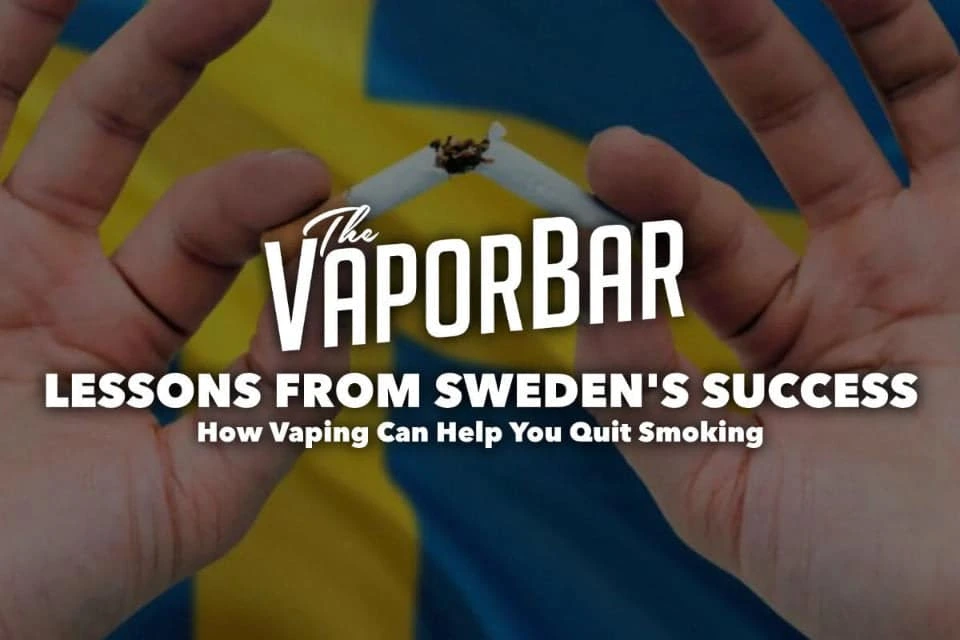
At The Vapor Bar, we’re all about helping you kick that smoking habit once and for all. If you’ve been trying to quit, you might want to take a page out of Sweden’s book. They’re on track to become the first smoke-free country in the EU, and their secret? Embracing safer alternatives like vaping.
Sweden’s success story lies in harm reduction. Instead of forcing smokers to quit cold turkey, they’ve made it easier to switch to safer alternatives, like snus and nicotine pouches. And while these products might not be as common in Canada, vaping is an excellent option that works on the same principle. By delivering nicotine without the harmful chemicals found in tobacco smoke, vaping helps reduce the risk of smoking-related diseases.
But here’s the kicker—this approach isn’t just about swapping one habit for another. It’s about gradually reducing your nicotine intake until you’re smoke-free. With vaping, you can control your nicotine levels and gradually decrease them over time. Plus, with the variety of flavors available, you won’t miss the taste of cigarettes one bit.
Sweden’s strategy shows that making safer alternatives accessible and acceptable is key to reducing smoking rates. At The Vapor Bar, we’re here to support your journey with high-quality vape products that can help you transition away from smoking. So why not take the first step today? Your future smoke-free self will thank you.
For more insights into Sweden’s successful smoke-free strategy, check out the full article on Vaping Post here.
—
This blog post offers an engaging and informative look at how vaping can help people quit smoking, inspired by Sweden’s success with harm reduction strategies.
Matt Ramage – The Vapor Bar